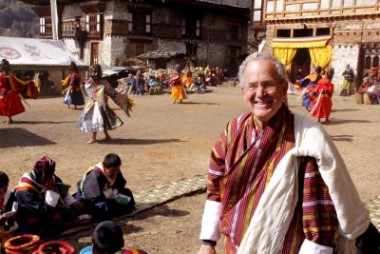Tag: PBS
Current’s annual survey of productions in the works for public TV
Pipeline 2014, Current’s latest preview of programs planned for future seasons on public TV, details more than 100 shows offered for broadcast by ...PBS streaming app now on Apple TV
Apple has signed PBS to create an app for its Apple TV set-top box service, AllThingsD reported Nov. 19. The app will ...PBS renews Tavis Smiley through 2015
PBS has renewed its commitment to Tavis Smiley for another two years, keeping the talk show on public TV through 2015. “The highlight for me is ...Latino advocacy group criticizes PBS treatment of newsman Ray Suarez
A grass-roots organization that protested Ken Burns’s exclusion of World War II Latino soldiers’ experiences from his 2007 documentary The War is speaking out ...PBS, stations lukewarm to CPTV’s ‘pay to play’ mobile app
Local public TV stations and PBS have opted, for now, to sit out of Connecticut Public Television’s new digital venture offering paid ...PBS programs win three at 2013 Creative Arts Emmys
American Masters and Downton Abbey led the opening round of the annual Primetime Emmys Sept. 15 by claiming three Creative Arts Emmys for PBS. American Masters, a production ...Liberal groups deliver petitions to WNET, demand PBS air Citizen Koch nationwide
Representatives of several liberal groups delivered signed petitions to New York City’s WNET Aug. 13, urging the station to ask PBS to ...PubTV commits to weekend news show
Public TV stations are backing PBS’s first foray into weekend news by committing airtime to PBS NewsHour Weekend, which debuts next month, although several ...Citizen Koch ends Kickstarter campaign with more than double its goal
Citizen Koch, a documentary about the influence of money in politics, closed its 30-day Kickstarter campaign with more than double its initial ...Public media wrestles with legality of unpaid internships
As managers grapple with how to cultivate young, diverse talent as public media leaders, questions of whether to compensate interns — and ...After teasing Carmen Sandiego fans, PBS says there are ‘no plans’ to bring show back
"There are no plans for Carmen Sandiego to return to PBS’s schedule," the network told Current, after teasing fans with a Tumblr ...PBS and APT programs win 14 Daytime Emmys
Among 14 Daytime Emmys awarded to public TV programs, APT's Travelscope won in Creative Arts categories for direction and sound mixing.San Diego Comic-Con will include Sherlock panel
PBS will have a presence at the San Diego Comic-Con for the first time in 44 years, with a Sherlock panel in the upcoming conference, Entetainment Weekly ...The Future of Media Leadership: A Storify
Follow the conversation around the next generation of public media leaders with Current's Storify of the June 14 forum.Stations fear exclusion from show production as PBS shifts strategy
When PBS unveiled its fall slate of primetime programs during its recent conference in Miami Beach, Fla., in May, many of the ...








